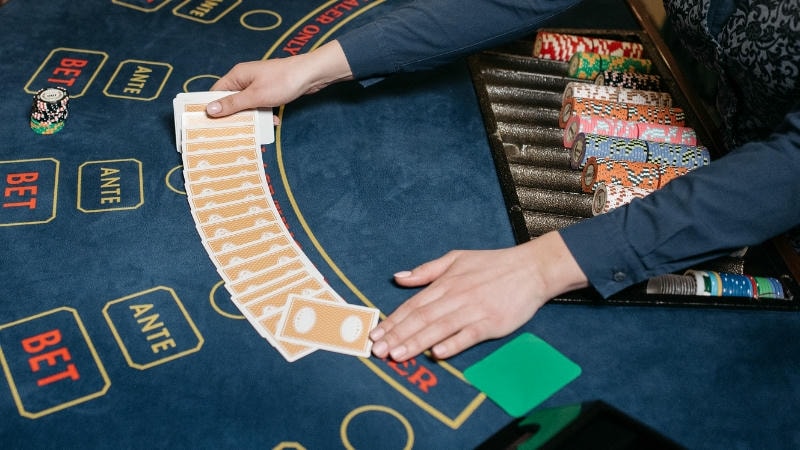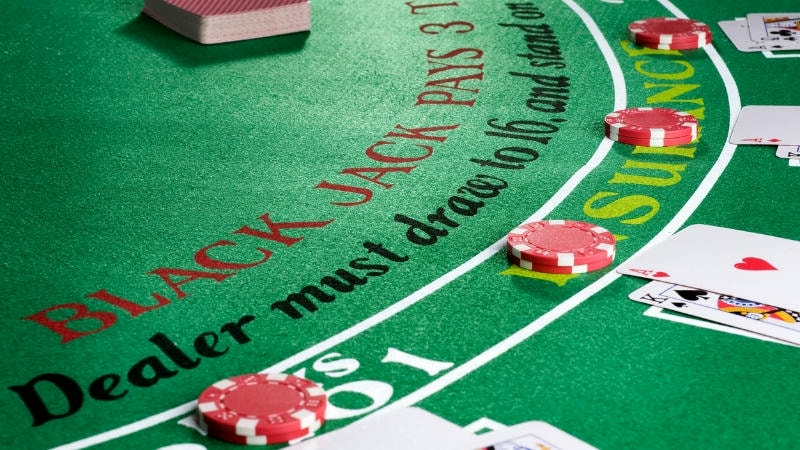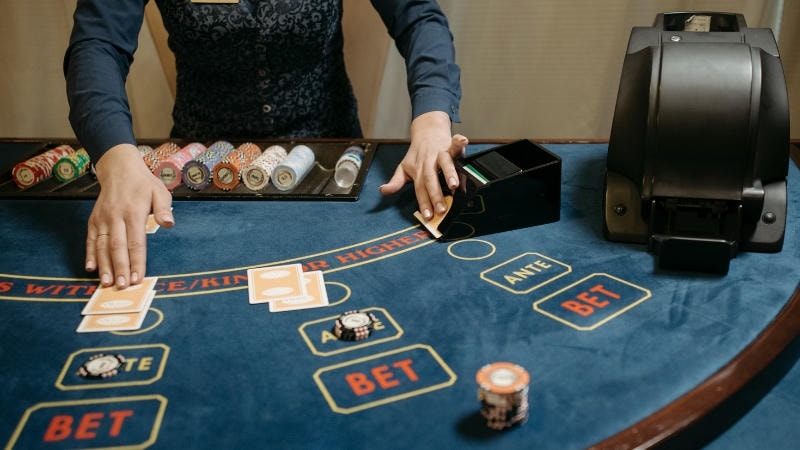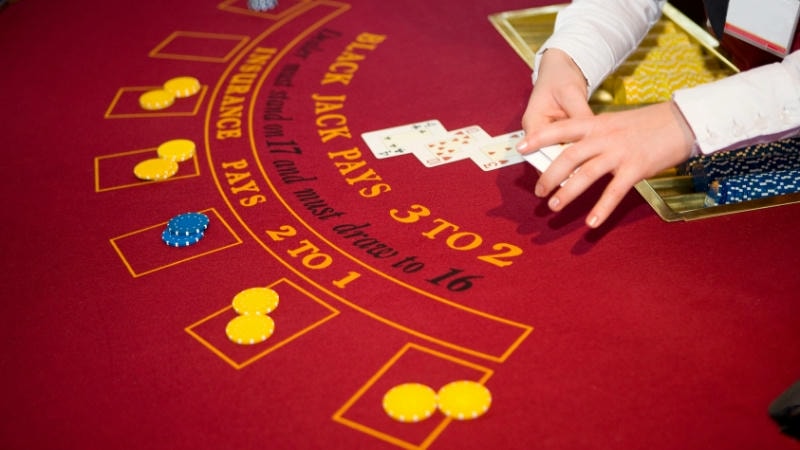Blackjack is a game of skill, luck, and strategy, captivating players worldwide with its blend of excitement and decision-making. Whether you’re playing at a lively casino table or online at platforms like 91 Club, mastering the basic strategy is your ticket to improving your odds and boosting your win rate. This guide dives into the essentials of blackjack’s basic strategy, offering creative insights and practical tips to elevate your game. With a focus on data-driven decisions and a touch of flair, let’s explore how you can tilt the odds in your favor.
Master the core of blackjack strategy
The basic strategy in blackjack is a mathematically proven set of decisions that minimizes the house edge, typically reducing it to around 0.5%. Unlike relying on gut feelings or luck, this strategy uses probability to guide your every move—whether to hit, stand, double down, or split. It’s like having a roadmap in a high-stakes maze, ensuring you make the optimal choice based on your hand and the dealer’s upcard.
Why basic strategy matters
Studies show that players who follow the basic strategy can cut the house edge from 2-4% (for casual play) to as low as 0.5%. This means for every $100 wagered, you’re statistically losing only 50 cents instead of $2-$4. Platforms like 91club often provide free blackjack games to practice this strategy, allowing you to hone your skills without financial risk. The key is consistency—stick to the strategy, and over time, your win rate will improve.

How to learn the basic strategy
Start with a basic strategy chart, a grid that outlines the best action for every possible hand combination. For example, if you have a total of 16 and the dealer’s upcard is a 10, the chart advises hitting in most cases. Memorize the chart or keep it handy while playing online. Practice makes perfect—after roughly 20 hours of gameplay, most players can internalize the strategy. Apps or demo modes on sites like 91club are excellent for this.
Optimize your decisions with precision
Blackjack isn’t just about following a chart; it’s about understanding why certain moves work. By diving into the logic behind the strategy, you can make smarter decisions and adapt to different game variations, boosting your win rate by up to 10% compared to random play.
When to hit or stand
The decision to hit or stand is the backbone of blackjack strategy. For instance, always stand on a hard 17 or higher, as the risk of busting (exceeding 21) is too high—over 70% when hitting on 17. Conversely, hit on a hard 11 or lower, as you can’t bust, and the odds of improving your hand are strong. For tricky hands like 12-16, your choice depends on the dealer’s upcard. If the dealer shows a 7 or higher, hitting is often safer, as they’re likely to have a strong hand (probability of 17-21 is around 60%).
Doubling down for profit
Doubling down can amplify your winnings, but it’s a high-risk move. The basic strategy suggests doubling on a total of 10 or 11 when the dealer’s up card is 9 or lower. This leverages the 30-40% chance of drawing a 10-value card, giving you a strong hand. For example, doubling on 11 against a dealer’s 6 has a success rate of about 65%. Use this sparingly and only when the odds align.

Bet smart to maximize your wins
Your betting strategy can make or break your blackjack success. While the basic strategy guides your gameplay, how you manage your bankroll determines how long you stay in the game and how much you can win. A disciplined approach can increase your session longevity by 50% or more.
Flat betting vs. progressive betting
Flat betting—wagering the same amount each hand—is the safest approach for beginners. It minimizes losses during cold streaks and keeps you in control. For example, betting $10 per hand on a $500 bankroll gives you 50 hands to play, assuming no wins or losses. Progressive betting systems, like the Martingale (doubling your bet after a loss), can be tempting but risky, as a losing streak of 5 hands could wipe out 31% of your bankroll. Stick to flat betting until you’re confident in your skills.
Bankroll management tips
Set a budget and stick to it. A good rule is to risk no more than 1-2% of your bankroll per hand. For a $1,000 bankroll, bet $10-$20 per hand. This ensures you can weather losing streaks, which statistically occur in 40% of sessions. Platforms like 91club often offer low-stake tables, perfect for practicing this approach. Also, set win and loss limits—walk away after doubling your bankroll or losing 50% of it to avoid emotional decisions.
Avoid pitfalls and refine your game
Even with the basic strategy, players often fall into traps that hurt their win rate. By sidestepping common mistakes and exploring advanced techniques (short of card counting in blackjack, which is frowned upon in many settings), you can push your win rate closer to the theoretical maximum.
Common mistakes to avoid
One major error is deviating from the basic strategy based on hunches. For instance, standing on a 16 against a dealer’s 10 feels safe, but it reduces your win probability by 10-15%. Another mistake is splitting 10s—never do this, as it breaks a strong hand (20) with an 85% win chance. Also, avoid insurance bets; they increase the house edge by up to 7%, according to statistical analysis. Stick to the chart, and your decisions will stay grounded in math.

Advanced tips for boosting wins
Once you’ve mastered the basics, consider table selection. Look for games with favorable rules, like those allowing surrender or paying 3:2 for blackjack (not 6:5, which raises the house edge by 1.4%). Online platforms like 91club often list rule variations, so choose wisely. Additionally, track your sessions to identify patterns—after 100 hands, you can estimate your win rate and adjust your bet sizing. This data-driven approach can improve your long-term results by 5-10%.
Blackjack rewards those who play smart. By sticking to the basic strategy, managing your bankroll, and choosing favorable tables, you can push your win rate up by 10-15%. Platforms like 91club offer the perfect space to practice and refine your skills. Stay disciplined, sidestep common mistakes, and let data guide your moves. With patience and practice, you’ll turn the tables in your favor, making every hand a step toward victory.

